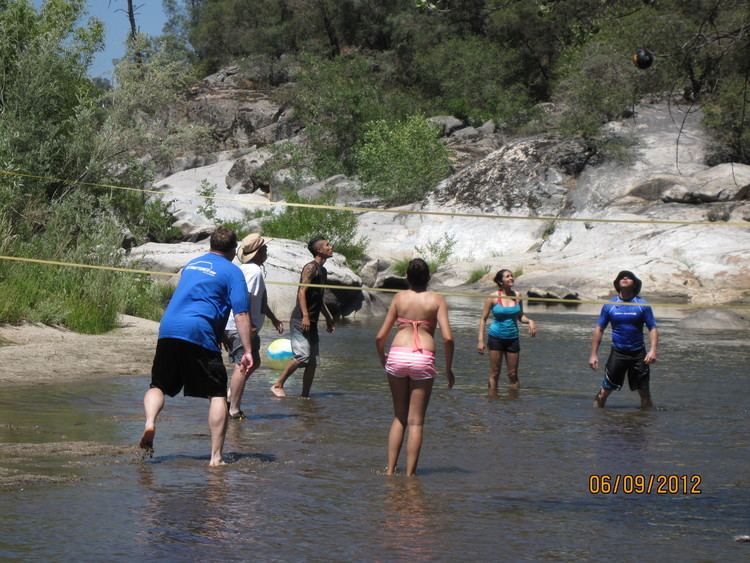- elevation 2,510 ft (765 m) Length 109 km | - elevation 108 ft (33 m) Sources Nelder Creek, Lewis Fork | |
 | ||
- left Nelder Creek, Coarse Gold Creek - right Lewis Fork Fresno River, Peterson Creek | ||
The Fresno River is a river in Central California and a major tributary of the San Joaquin River. It runs approximately 68 miles (109 km) from the Sierra Nevada Range to the San Joaquin River.
Contents
- Map of Fresno River California USA
- CourseEdit
- Lakes and damsEdit
- Lower riverEdit
- TributariesEdit
- TownsEdit
- CrossingsEdit
- References
Map of Fresno River, California, USA
CourseEdit
The Fresno River is formed by the confluence of Nelder Creek and Lewis Fork near the locality of Yosemite Forks. Some maps identify the confluence of Nelder Creek with Oak Creek in Oakhurst as the start of the Fresno River. From this point, it flows south through Oakhurst, west for several miles, then southwest to Hensley Lake. Below the lake, the river flows southwest to Madera, then west to the Eastside Bypass. The river exits the bypass then flows generally northwest to its confluence with the San Joaquin River, just north of Highway 152.
Lakes and damsEdit
Hidden Dam is the only major storage dam on the Fresno River. The dam forms Hensley Lake, a 90,000 acre foot (110,000,000 m3) reservoir. The United States Army Corps of Engineers built the earth-fill dam, which was completed in 1974. Its primary purpose is flood control, but it is also used to regulate flows for irrigation and groundwater recharge. In 1978, the lake was opened to the public for recreation and is a popular boating and fishing destination for locals.
Below Hidden Dam, the Fresno River provides water to Madera Lake via an unnamed distributary. Excess flow from the lake is returned to the Fresno River by the lake's dam. Further downstream, on the northeast edge of Madera, is the John Franchi Diversion Dam, a 15-foot (4.6 m) high, 263-foot (80 m)-wide earth and steel dam that is used to divert water into the Big Main Canal. The dam was built by the United States Bureau of Reclamation in 1964 and is operated by the Madera Irrigation District. From this point, the river is normally dry. The only time water is released past here is when water levels are high enough to spill over the dam.
Lower riverEdit
West of Road 17 in Madera County, the Fresno River's natural riverbed has been subject to much intervention by man and as a result, the natural riverbed has many gaps in it, which are now connected by man-made canals.
At Road 17, the natural riverbed has been modified to divert most flows into a manmade canal, which leads to the Eastside Bypass. Water can also be allowed to continue flowing down the main river channel (north of the man-made canal), but that water now ends up in the Bypass as well.
Once in the Bypass, water can exit via a small channel at a diversion dam and continue west along the natural riverbed the rest of the way to the San Joaquin River. Between the Eastside Bypass and the San Joaquin River, the riverbed (which is almost always dry) has been subject to straightening, but more or less follows its natural course.
TributariesEdit
In addition to many small unnamed streams, the Fresno River receives the water from the following streams:
TownsEdit
Towns along the Fresno River include:
CrossingsEdit
There are numerous crossings over the Fresno River in Madera and Merced Counties. Crossings are listed here beginning at the source and working downstream:
